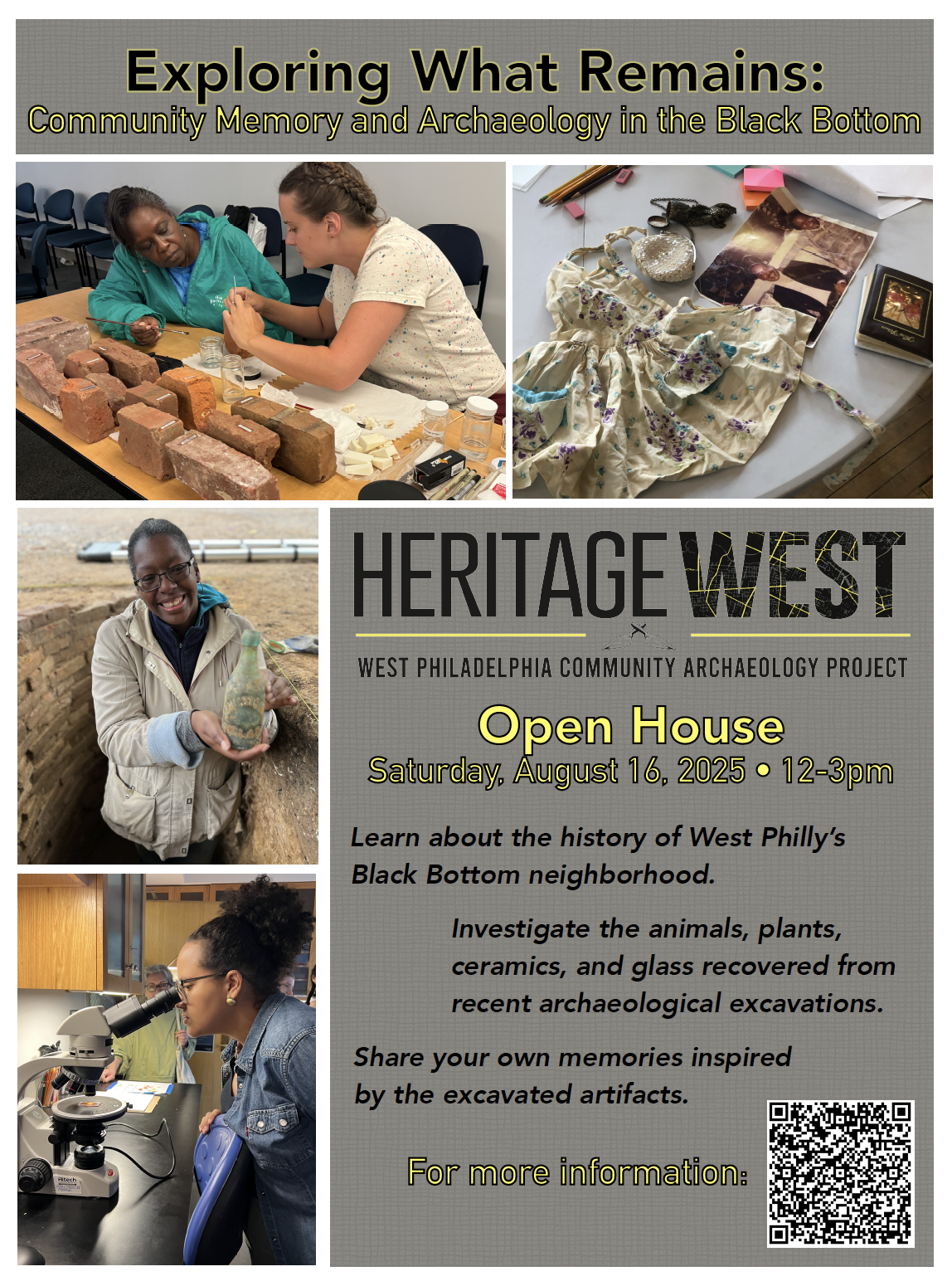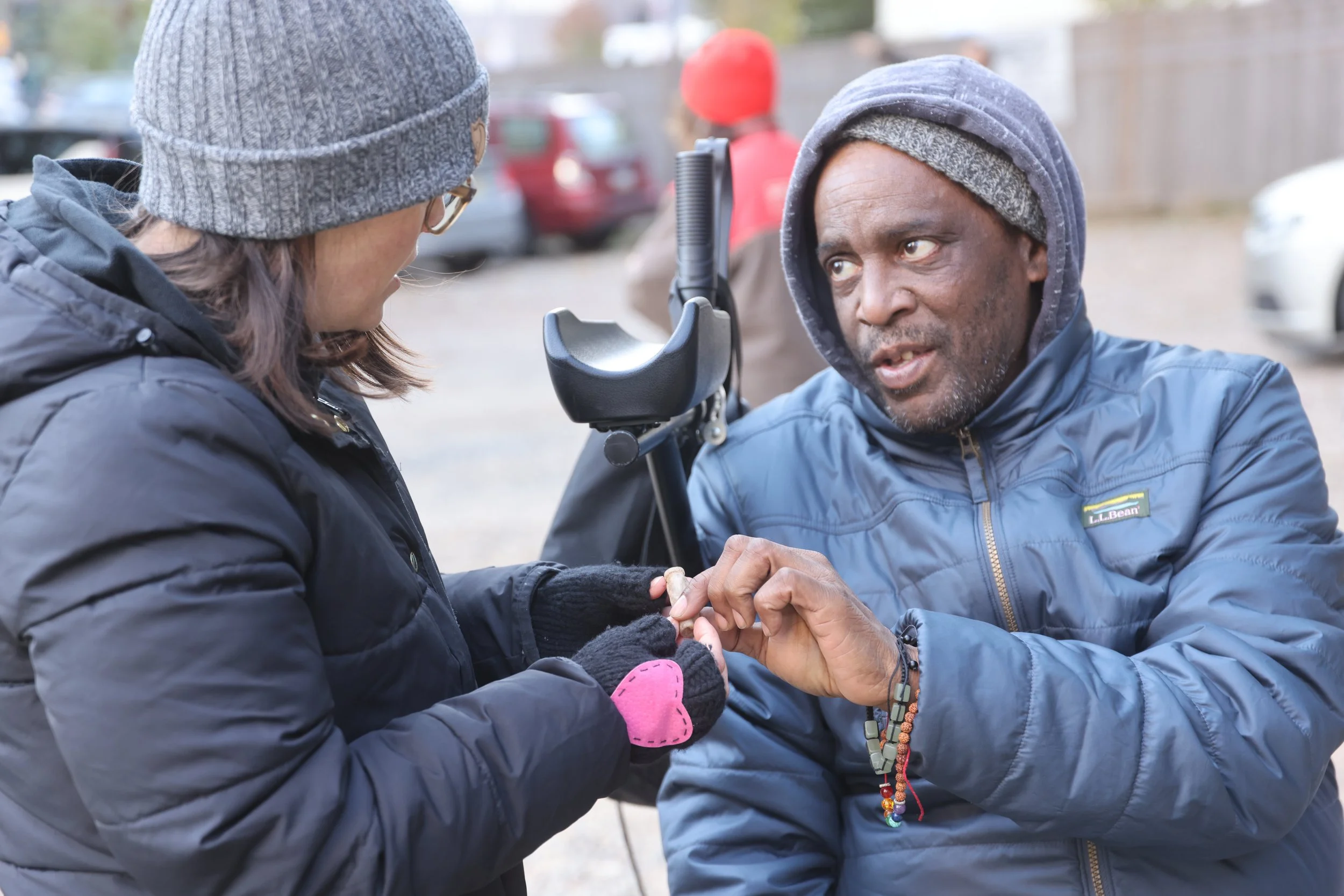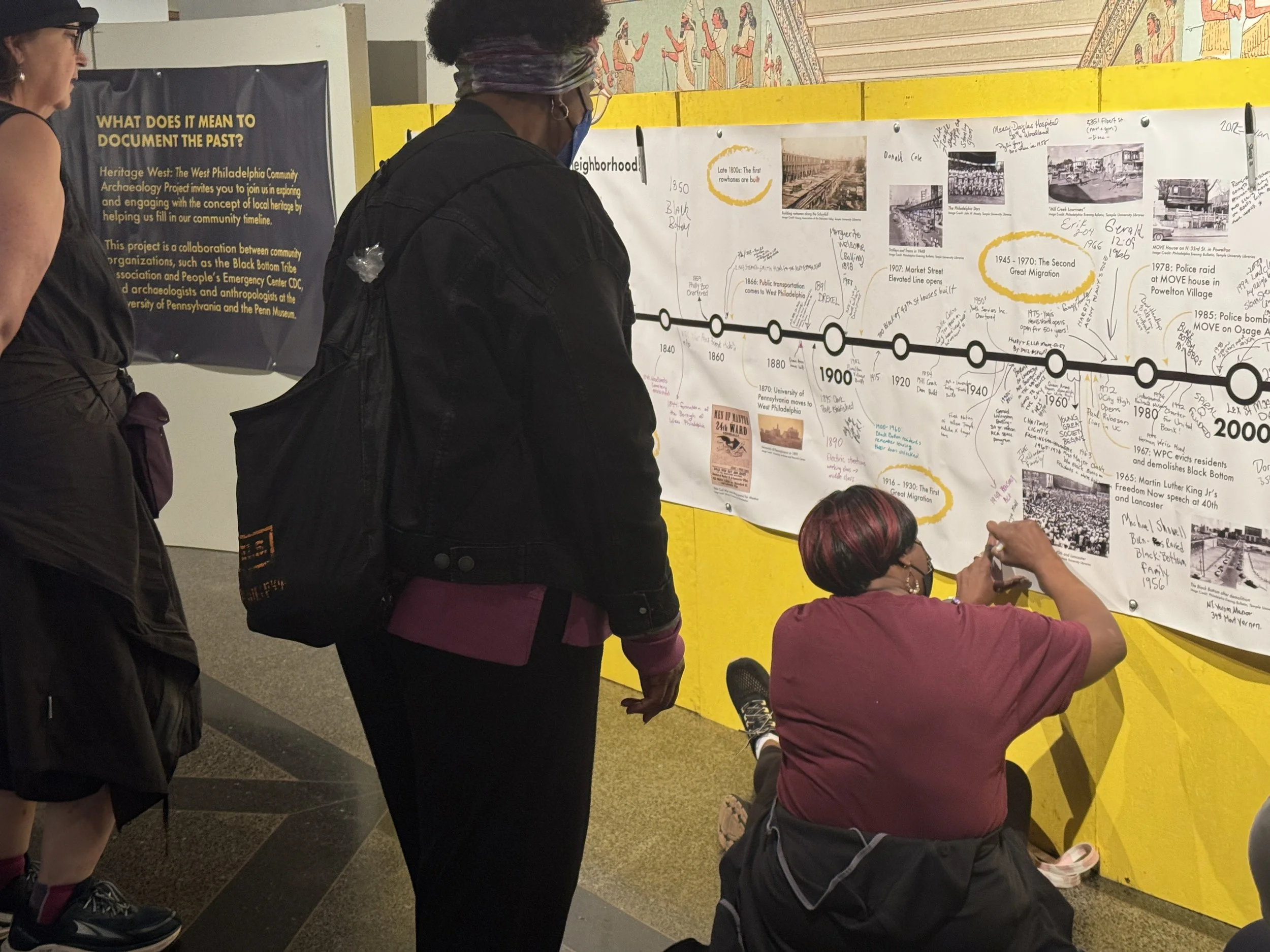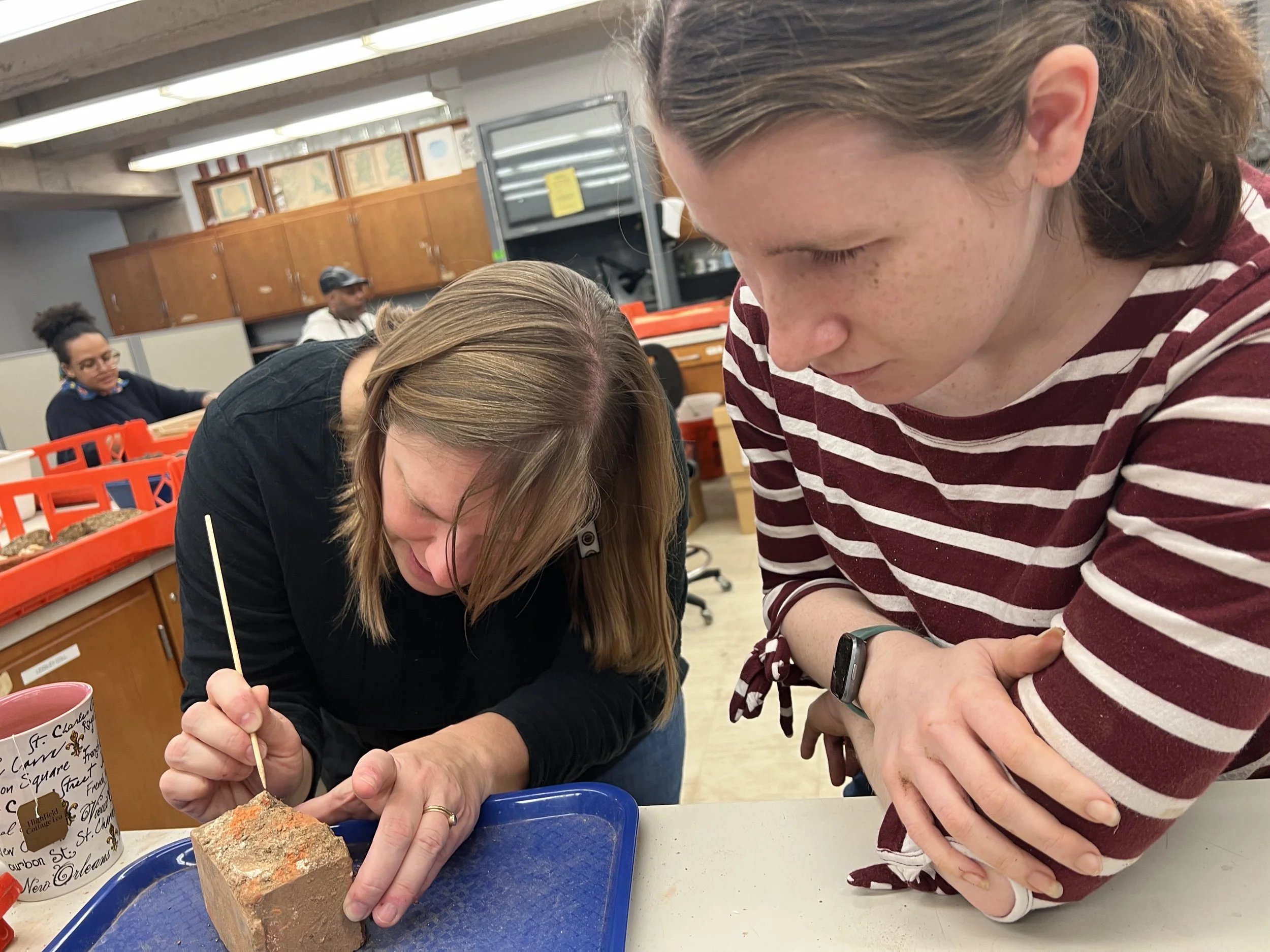Exploring What Remains: Community Memory and Archaeology in the Black Bottom
Please join us for an open house event at the Penn Museum to learn more about Heritage West, a community-led excavation that explores the history of the Black Bottom neighborhood by uncovering the lives of residents whose homes once stood behind the Community Education Center on Lancaster Avenue.
This free event will be held in Classrooms L1 and L2. When you enter through the Main or East Entrance, say you are here for the “Heritage West Event” and they will be able to direct you to the right place!
The following interactive stations will be available, allowing you to participate hands-on in historical and archaeological research in a wide variety of ways:
Oral History: Memories of the Black Bottom
The voices of former residents and descendants are essential to the project. Contribute your own memories, reflections, and community knowledge to bring depth and meaning to the material finds—bridging the past and present through lived experience.
Map and Timeline: Memory in Space and Time
Explore how the neighborhood changed over time through historical maps, photographs, and a community timeline. Contribute your own memories to the collaborative timeline and map! This station shows how Black Bottom transformed and places our excavation within the broader story of West Philadelphia.
Plants and Animals: The Archaeology of Food in the Black Bottom
Charred seeds, bones, and shell fragments reveal what people ate and how they interacted with their environment. Learn how studying plant and animal remains helps archaeologists reconstruct diets, foodways, and local ecosystems.
Ceramics and Glass: The Archaeology of Daily Life in the Black Bottom
Ceramic fragments from historic plates, bowls, and teacups and glass artifacts from bottles to window panes tell stories of daily life, family meals, and identity. Learn how archaeologists analyze style, material, and manufacturing marks to trace connections across time, class, and community.
Conservation: Taking Care of What We’ve Found
From painted plaster and bricks to beautiful jewelry and buttons, archaeological finds are fragile and need careful cleaning and preservation. This station shows the tools and techniques we use to stabilize objects, prevent decay, and prepare artifacts for study and display—ensuring they last for future generations.






